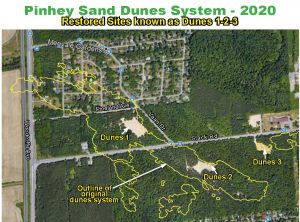Restoration parts of the sand dune system in Canada’s Capital
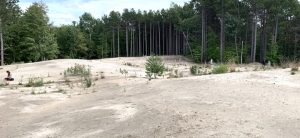
The sand dune system in Canada’s Capital is an end product of the Champlain Sea which was a deep depression caused by the colossal pressure of the 2 km thick ice sheet during the last glacial period. The brackish Champlain Sea water originated from the Atlantic Ocean and melting glaciers. At about 11,500 BP (before present) the full extent of the Champlain Sea occurred as the retreat of glaciers continued northward. Without the pressure of the ice sheet, the land quickly rebounded rendering the Champlain sea floor rising above the sea level at about 8,500 BP. This brings to an end of the Champlain sea. During the growing seasons, southeasterly winds picked up fine sand grains on the exposed sea floor along the Prescott-Ottawa path, then deposited them here in Ottawa into an extensive sand dunes system of over 1.5 million square meters, presently known as the Pinhey Sand Dunes System (PSDS). Thus, the PSDS was formed between 8,000 and 8,500 BP. This unique dune habitat is the home to a number of plant and animal species. These dune dwelling organisms have inhabited in these dunes for thousands of years despite the harsh dune environment with frequent strong winds, extreme summer temperature ranging from 60-72 degrees Celcius.
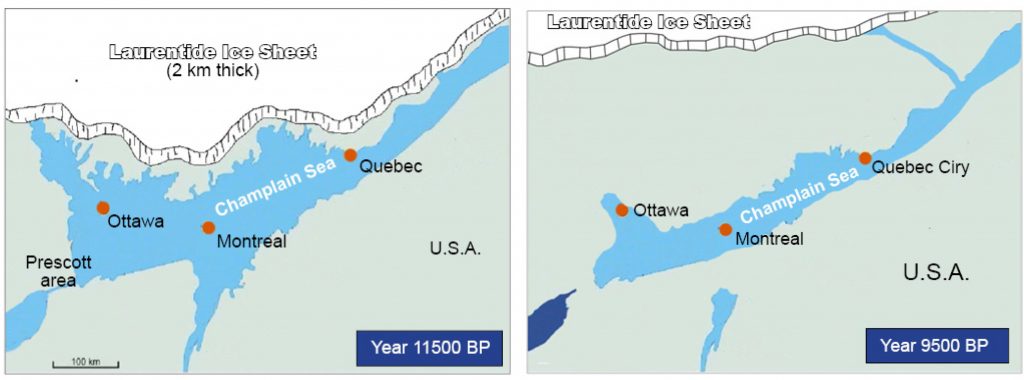
However, the livelihood of these unique organisms are being threatened as the PSDS was rapidly disappearing due to lack of knowledge of the value of dune habitats and ecosystems. By 2010 the remaining PSDS consists of several tiny fragments of open sandy areas, totaling about 0.05% (~5,000 m2) of what was once a large sand dune system of approximately 1.5 million m2. These open dune areas let alone the PSDS would disappear completely within 5-10 years if no action taken to save it.
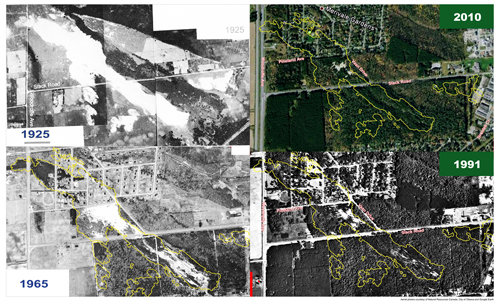
The fight to save Pinhey Sand Dunes Habitat, Biodiversity & Ecosystem
In 2011 Biodiversity Conservancy International in collaboration with the National Capital Commission (NCC) took on the restoration and reclamation parts of the PSDS in order provide the desperately needed living space for the remaining dune biodiversity and ecosystem. Furthermore, the effort also contributed to the preservation part of PSDS as well as to the enhancement of the natural habitat diversity in the National Capital Greenbelt.
As of 2020, four sections of PSDS have been restored. They are: Dunes 1: @ Pineland Ave & Vaan Drive, north of Vaan Drive; Dunes 2: @ south of intersection Slack Rd. & Vaan Dr.; Dunes 3: @ NCC Parking Lot P15, off Slack Road; and Dunes 4: @ Hydro Ottawa lines, off Slack Road near Merivale Road.
Gallery
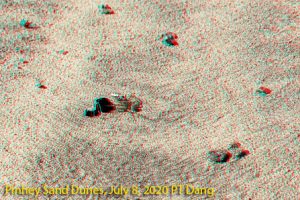
This Ghost Tiger Beetle (GTB) chased a spider wasp away and got a juicy morning meal, a paralyzed Beach Wolf Spider, while other GTB looked on (Need Red-Blue anaglyph glasses).
BCI Sand Dune Team
P.T. Dang (Scientist), Project Director; Stephen Aitken (Biologist), Project Coodinator; Henri Goulet (Scientist), Olivia Leon; Andrew Mott; Charles Cormier, Griffin Wright-Brown, T.D. Trinh.
The team is responsible for carrying out on the ground restoration of dune habitat and ecosystem, conducting biodiversity research, providing on-site and/or in-class education, giving presentations to interested groups, organizing workshops, engaging community, schools, universities and the public to raise awareness, understanding and appreciation of the unique Pinhey Sand Dunes habitat and ecosystem …
ASSOCIATES: Paul Catling (Botanist); Alan Donaldson (Earth Science).
Acknowledgments. The restoration project would be impossible without the many volunteers who have given up weekends to lend a hand. We appreciate their hard work and dedication.
The Pinhey Sand Dunes project is funded by the Ontario Trillium Foundation (OTF), TD Friends of the Environment Foundation (TD FEF), and the City of Ottawa’s Community Environmental Projects Grant Program (CEPGP).


